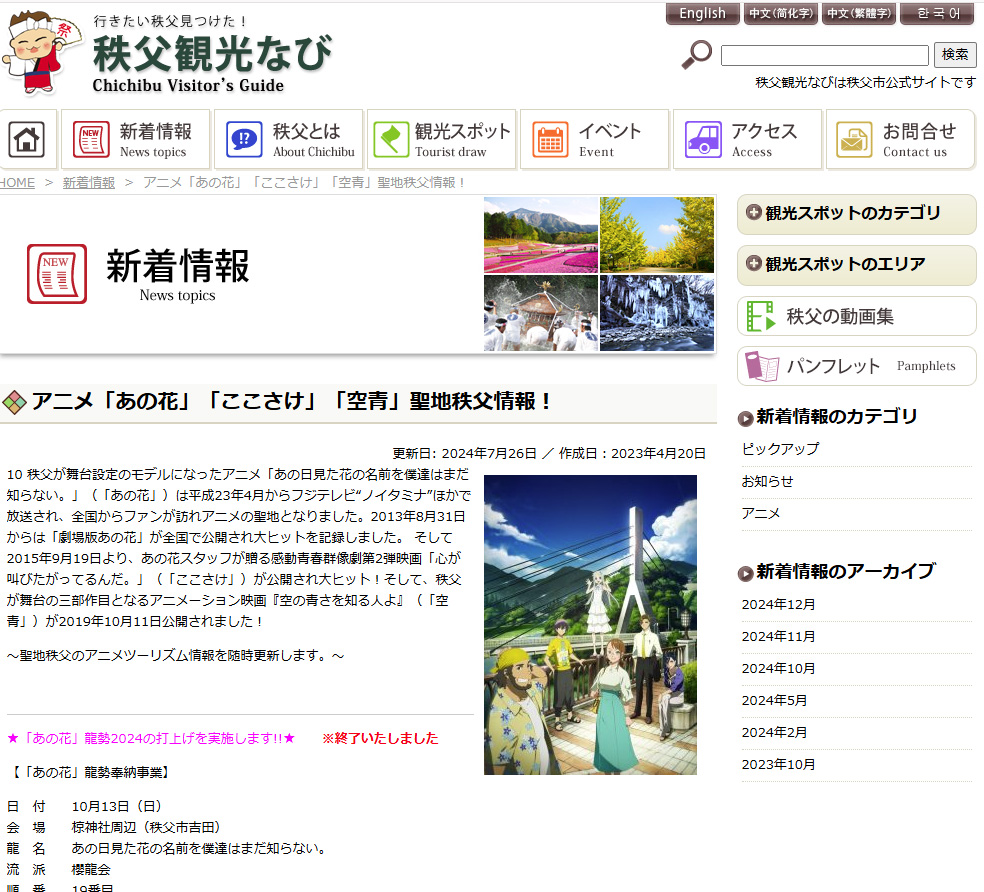New Business Opportunities and Potential Created by “Oshikatsu (Fan Activities)”
Activities driven by individual passion—known in Japan as “Oshikatsu”—are no longer confined to the realms of entertainment or local tourism. Today, they are reshaping industries and inspiring new forms of value creation. This article explores how this cultural phenomenon is evolving into a powerful business driver and how companies can harness it to build deeper connections with consumers and unlock new growth opportunities.
What Actually Is “Oshikatsu” (fan activities)?
“Oshikatsu” refers to the act of actively supporting and engaging with one’s favorite artist, character, sports team, or even brand. Fans express their enthusiasm in diverse ways—from attending live events and purchasing merchandise to sharing updates and creating content on social media.
While the English term “Fandom” broadly refers to fan communities or subcultures around a particular work or theme, “Oshikatsu” carries a more personal and emotional nuance. It emphasizes individual passion and dedication rather than collective belonging. In essence, “fandom” highlights community; “Oshikatsu” celebrates personal devotion. Both share the same spirit of support, but the Japanese concept conveys a distinctly intimate and culturally rooted expression of admiration.
The Rise of “Oshikatsu” in the Social Media Era
Social media has played a transformative role in expanding “Oshikatsu”. Fans now connect through online communities, sharing discoveries and amplifying their favorite creators or brands to wider audiences. What began as entertainment-related enthusiasm has grown into a significant social and economic movement, influencing sectors such as regional revitalization and tourism.
Among younger generations in particular, “Oshikatsu” has become more than a hobby—it’s a lifestyle. This shift signals a new kind of relationship between companies and consumers, where emotional engagement drives both identity and spending behavior.
Japan’s Expanding “Oshikatsu” Market
In Japan, the “Oshikatsu” economy is especially vibrant within entertainment. From idol concerts and anime events to gaming conventions, fans are fueling robust demand for related merchandise. According to the Ministry of Finance’s publication “Finance”, Japan’s live entertainment market reached approximately ¥629.5 billion in 2019 and is projected to exceed ¥663.9 billion by 2025—an indication of the powerful economic impact of fan-driven consumption.
Local governments are also leveraging “Oshikatsu” as a tool for regional promotion. Anime pilgrimage tourism, for instance, attracts thousands of visitors to the real-life settings of beloved series such as “Anohana: The Flower We Saw That Day” in Chichibu (Saitama Prefecture) and “GeGeGe no Kitarō” in Sakaiminato (Tottori Prefecture). These cases demonstrate how character-based appeal can invigorate local economies.
Japan’s unique “otaku culture” further supports the ecosystem, fostering industries that range from figure production and merchandise design to themed cafés and collaborative events. Collectively, these sectors form a vast and dynamic market built around passion and creativity.
The Global Spread of Fan-Driven Economies

Source: https://advanced-television.com/2024/09/10/forecast-sports-fandom-to-generate-13bn-a-year-for-uk-by-2034/
The “Oshikatsu” spirit is not confined to Japan—it’s part of a growing global trend.
In South Korea, K-pop has played a leading role in shaping the international fan economy. Artists integrate global strategies, offering not only music but also digital platforms and merchandise tailored for worldwide audiences. In the United States, franchises like Marvel have built massive fandoms around cinematic universes, driving success across film, events, and consumer products. In Europe, football fandom has evolved into a key economic force, combining live matches with digital streaming and branded merchandise.
Meanwhile, China’s fan economy—driven by idol culture and online gaming communities—has reached an enormous scale. According to iResearch’s “Fan Economy Business Model and Trend Report”, the market size of fan-related industries exceeded 4.1 trillion RMB (approximately 575 billion USD) in 2020.
Across regions, “Oshikatsu”-like activities adapt to local cultures, fueling creativity, consumption, and community-based economic growth.
Business Implications and Opportunities

Source: https://collabo-cafe.com/
For companies, “Oshikatsu” represents far more than a cultural curiosity—it’s a business strategy. At its core lies the immense potential of the fan economy, which spans multiple industries beyond entertainment.
In fashion, collaborations featuring popular artists or characters consistently attract attention, as fans are eager to own the same products their favorites use or endorse. In beauty, campaigns inspired by fandom culture have successfully created entirely new product lines.
Food and beverage brands are also joining in. Limited-edition packaging, character-themed menus, and region-specific collaborations all tap into consumers’ emotional engagement, encouraging repeat purchases and social sharing. Some local specialties have even been reimagined through “Oshikatsu” partnerships, generating renewed interest in regional economies.
Digital engagement is another frontier. By using data analytics and social listening, companies can better understand fan preferences and develop more personalized offerings. Social media campaigns and virtual events allow brands to build lasting connections that transcend physical boundaries.
Loyalty programs, member-exclusive events, and co-creation initiatives further deepen these relationships. When fans feel recognized as part of a brand’s journey, their enthusiasm transforms into long-term advocacy.
Foresight
The “Oshikatsu” movement shows no sign of slowing down. As digital technology continues to evolve, connections between fans, brands, and creators will grow even stronger, transcending geography and redefining engagement.
Forward-looking companies can leverage this trend to co-create new experiences and products with their audiences. “Oshikatsu”-driven marketing—especially when aimed at younger, digitally native consumers—offers a path toward sustained growth and differentiation.
Whether through collaborative product design, community-led events, or hybrid physical-digital campaigns, businesses that understand and empower fan passion will be best positioned to thrive in this new economy.
Summary
At its heart, “Oshikatsu” is a cultural force that transforms individual enthusiasm into economic energy. Fueled by social media and digital innovation, it’s reshaping how consumers interact with brands and how communities form around shared passion.
For businesses, tapping into this phenomenon means more than boosting sales—it’s about building meaningful, long-term relationships with audiences. From regional revitalization to digital engagement and co-creation models, “Oshikatsu” offers a wealth of strategies for brands aiming to connect authentically with modern consumers.
Feel free to contact us
At MAY Planning, we provide consulting and creative support for companies looking to integrate “Oshikatsu”-based strategies into their marketing and social media campaigns. We also assist with collaboration planning and fan engagement initiatives designed to turn passion into growth.
References:
1)推し活の経済効果はどれくらい?市場規模と推し活マーケティングのメリットとは. (2024, October 25). Cross Marketing. https://www.cross-m.co.jp/column/marketing/mkc20241025
2)企業が取り入れる推し活マーケティングとは?事例や成功のポイントを解説. (2023, April 25). Cross Marketing. https://www.cross-m.co.jp/column/marketing/mkc20230425
3)Yukari. (2023, September 4). Japanese Subculture – Oshikatsu. How To Japan. https://howtojapan.net/2023/09/04/japanese-subculture-oshikatsu/
4)『2025年推し活トレンド予想』推し活ブランドOshicocoが発表!. (2024, November 22). PR Times. https://prtimes.jp/main/html/rd/p/000000090.000095735.html
5)Nozomi kishi. (2024, December 2). 推し活盛況の背景に承認欲求疲れ 夢を託すことでも心は満たされる. 日経ビジネス. https://business.nikkei.com/atcl/gen/19/00645/112500006/
6)[2024]使活動的歷史!最新推薦的營銷市場和未來的過渡預測. センイルJAPAN. https://twn.birthdayadjp.shop/blogs/senil-%E6%94%AF%E6%8C%81%E5%BB%A3%E5%91%8A%E6%9C%89%E7%94%A8%E7%9A%84%E6%96%87%E7%AB%A0/2024-oshikatsu-research?shpxid=9a168f10-eef6-4608-87b0-1de59e594394
7)Namita bohara. (2024, November 4). From Enthusiasts to Partners: The Impact of Fan Culture on Modern Marketing. ET Edge Insights. https://etedge-insights.com/in-focus/opinion/from-enthusiasts-to-partners-the-impact-of-fan-culture-on-modern-marketing/
8)Hanna park. (2023, March 22). How Fandom Can Support Your Global Marketing Strategy. Forbes. https://www.forbes.com/councils/forbescommunicationscouncil/2023/03/22/how-fandom-can-support-your-global-marketing-strategy/
9)B.Stage Releases the 2024 Fandom Trends Report, Providing Key Insights For Business Growth In the Age of Fandom Tech. (2024, February 21). B.Stage. https://bstage.in/article/2024-fandom-trend-report-en/
10)楠原 雅人/胡桃澤 佳子. (2022, November). ライブエンタメ市場の現状と今後の展望. 財務省. https://www.mof.go.jp/public_relations/finance/202211/202211j.pdf
11)飯圈經濟:要麼花錢要麼花時間,還有一套網絡術語. (2021, September 8). BBC. https://www.bbc.com/zhongwen/trad/chinese-news-58475660
12)Forecast: Sports Fandom to Generate £13bn a Year for UK b



